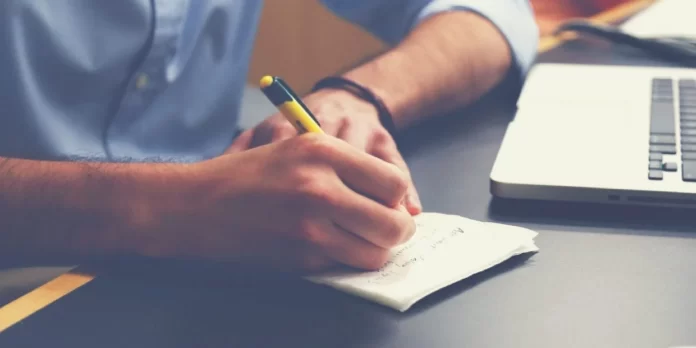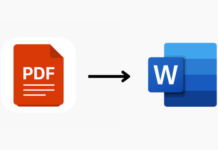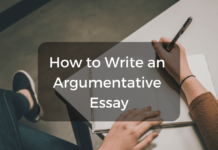An excellent proofreading job holds the power of separating an outstanding essay from a “so-so” or mediocre one. The art of proofreading can elevate your final output, giving it better structure and flow. It’s the editing step you need to ensure your work is free from errors.
You can enlist the help of a professional essay editing service or proofread yourself. Whatever you choose, it’s important never to confuse proofreading with copyediting. The former is the last stage of the editing process, which involves catching small mistakes like missing words, misspellings, grammar mistakes, formatting issues, or typos.
Meanwhile, copyediting entails more effort, such as cutting off extraneous details and rephrasing poorly-constructed sentences to prevent the readers from getting lost or confused. Whether you’re doing a final check of your project or checking another person’s work, it’s vital to do the last run-through to ensure you don’t miss out on mistakes. Check out these tips to help you proofread your essay in less than ten minutes.
Table of Contents
Print and Check Old School Style
If you’re in a rush to spot mistakes, print your essay and get a hard copy. In this modern world, most people stare at their computer screens and gadgets like phones, smart TVs, or tablets for a long time. This results in eye strain which could make editing the final copy difficult.
When you check a printed copy, you can easily see wrongly spelled words and other errors you didn’t spot in the initial edit. A printout offers the following benefits:
- Less strenuous on the eyes
- A lot faster to peruse and finish
- Make it easier to find typo errors
- Can readily check for sequence and page numbers
Focus on Punctuation Errors
When you’re doing the final edit of your paper, one effective and efficient proofreading technique is to focus on punctuation. Watch out for the most common issues below:
- Misplaced commas
- Wrong apostrophes
- Missing periods
- Failure to use a semi-color where necessary
- Incomplete parentheses, brackets, or quotation marks
Make Time to Say the Words
If you’re determined to polish your essay, it will help to read aloud rather than merely going through the work with your eyes. The more senses you use, the better your final output because of better precision and focus. When you’re reading aloud from printed material, you engage your sense of hearing, sight, and touch.
As a result, apart from the eyes, your ears and tongue catch errors too. Your spoken word separates you from your work, allowing you to clean up your prose. Being able to do that helps with the following:
- Somehow provides an objective viewpoint of your writing for better outcomes
- Improving sentence structure like fixing fragments or run-on sentences
- Help determine if there’s a better word choice for the sentence
- Hearing what you wrote can provide a new perspective on things
Take a Swift Break for Better Clarity
If you’re concerned about editing in under ten minutes, you may be pressed for time to finish your essay. Hence, taking a short break may feel counterintuitive. But on the contrary, stepping away from your essay helps you proofread the material faster with improved quality.
While staring at the same document for hours, editing and noticing errors is more arduous. Thus, if you have time, it’s best to take a break to gain distance from your work. Letting your draft sit gives you fresh eyes and provides a new perspective.
If you have ample time, let your essay rest overnight. But if you’re running after a strict deadline, veering your eyes from the document for five to ten minutes helps. Drink water, do some stretching, or go for a stroll, so when you skim the work again, you have renewed attention which equates to better results.
Try Unique Techniques For Faster Outcomes
Do something atypical when you’re desperate to fix your essay and ascertain there are no mistakes. Go of your usual editing patterns and give the following techniques a try:
- Do it backwards: Start proofreading from the last page to the front. Beginning at the end allows you to scour through sentences and lines. It forces you to stop obsessing over the meaning of the paper and zero in on the surface elements most writers typically miss.
- Use a ruler: Get your trusty ruler and place it beneath each sentence. When you have a ruler, your eyes will focus on the specific text. Hence, your eyes don’t feel overwhelmed because the text looks more manageable.
- Check typical mistakes: Since you commonly write essays for school or work, you may be aware of the common errors you typically commit. Before you start proofreading the entire paper, catch if you’ve made the same mistakes and correct them ahead.
- Separate errors: It would also help to check one mistake at a time. If you’re a frequent comma offender, look at all your commas and see if they make sense. Then proofread for the next common problem.
- Change text format: If you’re used to Times New Roman 12, it may help to change the font. When you’ve been staring at the same document for hours, your mind could begin playing tricks on you, making it all the more difficult to spot issues. Shake things up by varying the font style, size, line spacing, and even color so that it would look different.
Get Someone Else to Do the Proofreading
If you’re desperate to polish your paper, ask someone else to do it for you, like a sibling, friend, or classmate. Since you are the person who wrote the paper, you’re fully invested in your work and may not be the most objective person to review it. In contrast, another person viewing your work has fresh eyes and no attachments to the written work, so editing becomes easier.
Alternatively, you can also rely on a professional service and pay a small fee to improve your text. And, of course, there’s the standard grammar and spell check in most word documents or more progressive apps like Grammarly.
Remember, proofreading and editing go hand in hand. Your goal is not just to polish errors but polish the final output to make it clear and exciting. Shorten long sentences and pay attention to repetitive and unnecessary words to ensure your essay is cohesive and successful in conveying your message.












